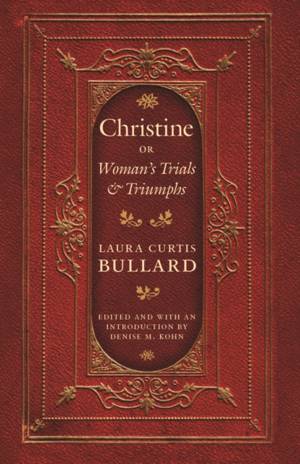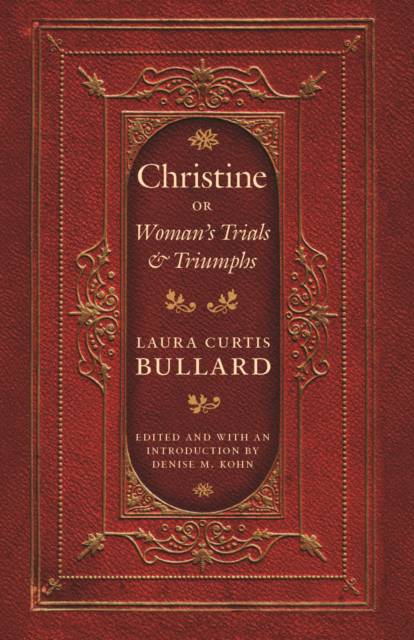
- Afhalen na 1 uur in een winkel met voorraad
- Gratis thuislevering in België vanaf € 30
- Ruim aanbod met 7 miljoen producten
- Afhalen na 1 uur in een winkel met voorraad
- Gratis thuislevering in België vanaf € 30
- Ruim aanbod met 7 miljoen producten
Zoeken
Omschrijving
When Laura Curtis Bullard wrote the novel Christine in 1856, she created one of antebellum America's most radical heroines: a woman's rights leader. Addressing the major social, political, and cultural issues surrounding women from within an unusually overt feminist framework for its time, Christine openly challenges a social and legal system that denies women full and equal rights. Christine defies her family, rejects marriage, and leaves a job as a teacher to embark on her career, rewriting the script for a successful nineteenth-century heroine. Along the way, she recreates domesticity on her own terms, helping other young women gain economic independence so that they, too, have the autonomy to make their own choices in love and life. One of the triumphs of the novel is the author's ability to create a sympathetic heroine and a fast-paced plot that intertwines vivid scenes of suicide, destitution, and an insane asylum with theoretical and political discussions--so skillfully that the novel successfully appealed to otherwise hesitant middle-class readers.
Specificaties
Betrokkenen
- Auteur(s):
- Uitgeverij:
Inhoud
- Aantal bladzijden:
- 432
- Taal:
- Engels
- Reeks:
Eigenschappen
- Productcode (EAN):
- 9780803213609
- Verschijningsdatum:
- 1/01/2011
- Uitvoering:
- Paperback
- Formaat:
- Trade paperback (VS)
- Afmetingen:
- 140 mm x 216 mm
- Gewicht:
- 544 g

Alleen bij Standaard Boekhandel
+ 106 punten op je klantenkaart van Standaard Boekhandel
Beoordelingen
We publiceren alleen reviews die voldoen aan de voorwaarden voor reviews. Bekijk onze voorwaarden voor reviews.








